|
 |
Sake from Osaka Prefecture (Sake by Region)
|
|
In land size, Osaka is, together with Kagawa, the smallest prefecture in Japan. Lying at Osaka Bay, the Yodo and Yamato Rivers flow through the prefecture. Mountains surround the three other sides of the prefecture and here nature can be found, as...
|
Japan - 2017-08-11 21:45:39 |
|
|
|
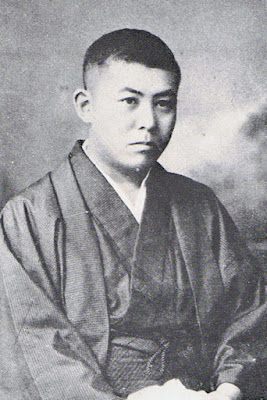 |
Modern Japanese Fiction by Year (3): 1912-1926, The Taisho Period
|
|
In a literary sense, the Taisho period (1912-1926) is a rich time in which seven of the ten best modern fiction writers from the canon were active (Soseki, Ogai, Kafu, Shiga, Tanizaki, Akutagawa and - just starting at the end of the period -...
|
Japan - 2017-08-10 21:49:07 |
|
|
|
 |
Modern Japanese Fiction by Year (2): 1905-1911, First Flourishing in Late Meiji
|
|
We continue our survey of the Japanese Novel with Part Two - 1905-1912.(Part One is here.)In Part One we saw an early-Meiji-period Japan that was so busy modernizing and catching up with the West that there was almost no time to develop a new...
|
Japan - 2017-07-28 21:48:55 |
|
|
|
 |
Sake from Nara Prefecture (Sake by Region)
|
|
In comparison to the giant sake centers of Nada and Fushimi, the other areas in the Kansai are mere dwarfs. That does not mean you won\'t find excellent sake there - especially Nara Prefecture boasts some great local makers.There is one more...
|
Japan - 2017-07-03 21:48:38 |
|
|
|
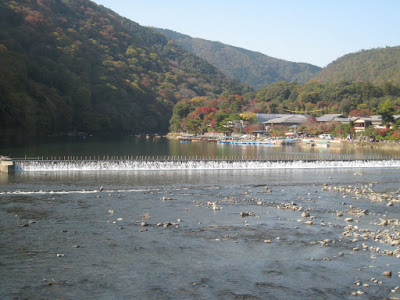 |
Hyakunin Isshu (One Hundred Poets, One Poem Each): Poem 26 (Fujiwara no Tadahira)
|
|
Hyakunin Isshu, Poem 26Ogura-yamamine no momoji-hakokoro arabaima hitotabi nomiyuki matanamu??????????????????????????If the maple leaveson the peak of Mt Oguracould have heartsthey would waitfor the Royal OutingFujiwara no...
|
Japan - 2017-06-28 21:51:12 |
|
|
|
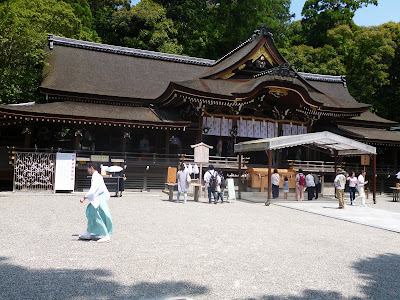 |
The Omiwa Shrine and Sake
|
|
Mt Miwa, a beautiful conical mountain (467m / 1532ft) north of the city of Sakurai, at the eastern edge of the Yamato basin in Nara Prefecture, is an important sacred mountain, home to one of Japan\'s earliest Shinto shrines, called Omiwa or...
|
Japan - 2017-06-27 21:49:27 |
|
|
|
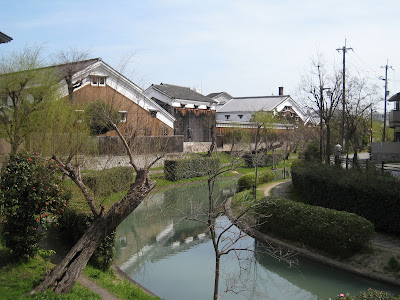 |
Sake from Kyoto Prefecture (Sake by Region)
|
|
Kyoto Prefecture is in volume the second sake producing prefecture in Japan (71,286kl or 16.0% - figures 2015) - after Hyogo (28.5%) and before Niigata (8.4%). That is thanks to the breweries in the southern part of Kyoto city, in Fushimi, which are...
|
Japan - 2017-06-17 21:49:38 |
|
|
|
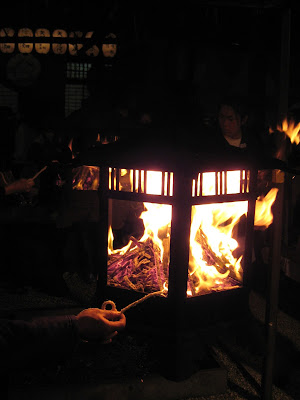 |
Okera mairi (Yasaka Shrine, Kyoto)
|
|
The Yasaka Shrine on the eastern edge of Kyoto plays an important role in the cultural life of the old capital, now and in the past. In July it organizes Kyoto\'s largest festival, the Gion Matsuri, and and top of that it is one of the most...
|
Japan - 2017-06-08 21:45:18 |
|
|
|
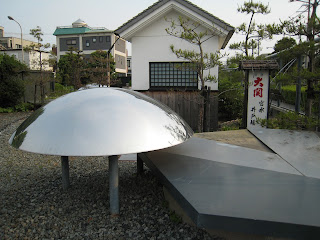 |
Sake from Hyogo Prefecture (Sake by Region)
|
|
The largest sake producing area in the whole of Japan can be found in Hyogo Prefecture, at the seaside of Nishinomiya and in the eastern part of Kobe. This area is called "Nada" and as there are five sake producing districts, one speaks about the...
|
Japan - 2017-06-04 21:48:26 |
|
|
|
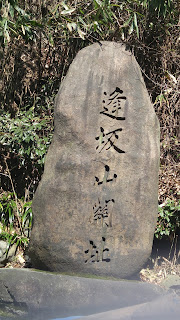 |
Hyakunin Isshu (One Hundred Poets, One Poem Each): Poem 25 (Fujiwara no Sadakata)
|
|
Hyakunin Isshu, Poem 25na ni shi owabaOsakayama nosanekazurahito ni shiraredekuru yoshi mo gana ????????????????????????????If its name is true,"come sleep vine" of "Meeting Slope Hill,"isn\'t there some waywithout anyone knowingthat it can...
|
Japan - 2017-06-02 21:49:04 |
|
|
|
 |
"Japanese Pilgrimage" by Oliver Statler (Best Non-Fiction)
|
|
This is where one begins. On this mountaintop, at the holiest spot of this sprawling complex of temples, in the shadow of these towering cedars, one stands before the tomb of the saint whose life and legacy inspire the pilgrimage. Here on asks...
|
Japan - 2017-05-02 21:51:57 |
|
|
|
 |
"Daodejing, The Classic Book of the Way and its Power" (Best Non-Fiction)
|
|
One of the reasons I decided to study Chinese (a decision that shocked both my parents and my teachers at the Grammar School in the small town where I lived) was my discovery of philosophical Daoism. Not satisfied with what the protestant church my...
|
Japan - 2017-04-28 21:50:51 |
|
|
|
 |
"The Empty Mirror" by Janwillem van de Wetering (Best Non-Fiction)
|
|
This small memoir, that ends on a tone of disillusion, is one of the best accounts of a Westerner coming to terms with Zen and meditation. The Empty Mirror, Experiences in a Japanese Zen Monastery, written by the Dutch adventurer, businessman and...
|
Japan - 2017-04-28 21:50:51 |
|
|
|
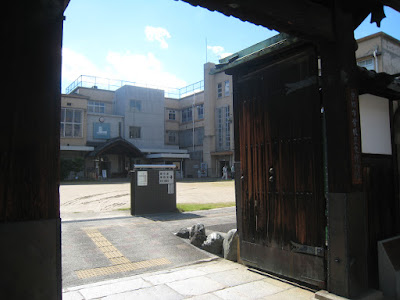 |
Science & Education: Two Museums in Kyoto
|
|
Science and education are the pillars of a modern country. This is demonstrated clearly by the development of Japan since the late 19th century. Two small museums of Kyoto reflect this development in their displays: The Kyoto Museum of School...
|
Japan - 2017-02-28 21:49:58 |
|
|
|
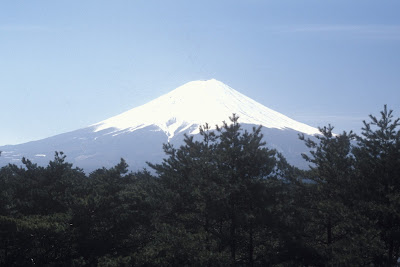 |
The Best Three in Japan
|
|
Pythagoras calls three the perfect number, expressive of ?beginning, middle, and end,? and he therefore makes it the symbol of the divine. The Japanese, too, are fond of this number, and the Japanese-language Wikipedia has an enormous page with...
|
Japan - 2017-01-28 21:50:13 |
|
|
|
 |
Nanakusa or Seven Herb Festival
|
|
January 7 is the day of the Nanakusa or Seven Herb Festival. This day, many Japanese eat rice gruel (kayu) that contains the seven medicinal herbs of spring as a prayer for good health in the coming year (nanakusa-gayu).In ancient Japan, people...
|
Japan - 2017-01-07 21:42:52 |
|
|
|
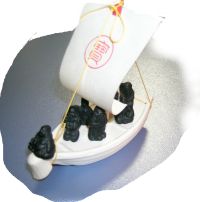 |
Seven Deities of Good Fortune in Sumida
|
|
The Sumida River circuit of the Seven Deities of Good Fortune in Tokyo is the very first of this type of New Year pilgrimages: it was devised in 1804 by Sawara Kiku, a retired curio dealer and dabbler in Chinese culture. Sawara had bought land here...
|
Japan - 2017-01-04 21:46:47 |
|
|
|
 |
First Calligraphy in the New Year
|
|
The First Calligraphy in the New Year is called "Kakizome" or "Kissho-hajime" and it is one of many "firsts," as we have hatsugama (the first tea ceremony), hatsu-ike (the first flower arragement), hatsu-ni (the first cargo), and hatsuyori...
|
Japan - 2017-01-02 21:44:54 |
|
|
|
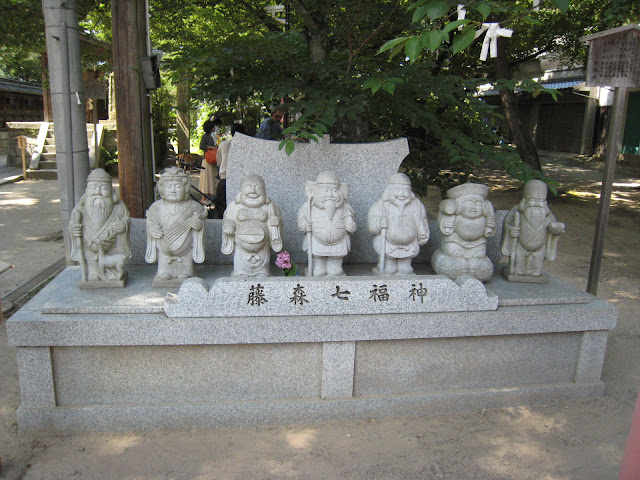 |
The Seven Deities of Good Fortune (Shichifukujin)
|
|
In Japan, "Shichifukujin" are the seven gods (kami) who are said to bring wealth and long life. The group of these seven lucky gods consists of Ebisu, Daikokuten, Bishamonten, Benzaiten, Fukurokuju, Jurojin and Hotei. This includes gods and sages...
|
Japan - 2017-01-01 21:42:49 |
|
|
|
 |
The Year of the Rooster
|
|
2017 is the Year of the Rooster (toridoshi) in Japan (also translated as cock or chicken; the term denotes general barnyard fowl), the tenth year in the cycle of 12 signs from the Japanese (and originally Chinese) zodiac. The Year of the Rooster is...
|
Japan - 2016-12-31 21:49:48 |
|
|
|
 |
Meyami Jizo, Kyoto
|
|
The small temples of Kyoto are very interesting when you happen to stumble upon them, but usually they are not places to seek out on purpose. Meyami Jizo is different - I have often visited this small temple on Shijodori in Kyoto close to Gion with...
|
Japan - 2016-12-26 21:42:50 |
|
|
|
 |
The Ako Incident and the Forty-Seven Loyal Retainers (Chushingura) in fact and fiction
|
|
As I wrote in my ?revious post about the seasonal events of December, the last month of the year is the season that traditionally the story of the Forty-Seven Ronin (also called Chushingura, "the Treasury of Loyal Retainers," after the title of...
|
Japan - 2016-12-23 21:41:59 |
|
|
|
 |
Hyakunin Isshu (One Hundred Poets, One Poem Each): Poem 24 (Sugawara no Michizane)
|
|
Hyakunin Isshu, Poem 24kono tabi wanusa mo toriaezuTamukeyamamomiji no nishikikami no mani mani???????????????????????????on my present journeyI couldn\'t bring sacred streamersto Offering Hillso perhaps this brocade of autumn leavesis to the...
|
Japan - 2016-12-18 21:48:26 |
|
|
|
 |
Hyakunin Isshu (One Hundred Poets, One Poem Each): Poem 23 (Oe no Chisato)
|
|
Hyakunin Isshu, Poem 23tsuki mirebachiji ni mono kosokanashikerewaga mi hitotsu noaki ni wa aranedo   ????????????????????????????when I view the moonI feel the sadnessof a thousand thingsyet it is not autumnfor me aloneOe no Chisato (fl....
|
Japan - 2016-12-15 21:45:54 |
|
|
|
 |
Kanzake - the season of warm sake
|
|
Years ago when I started making promotion for sake, the main "enemy" was the wrong image of the brew caused by the piping hot sake served in all too many restaurants, not only abroad, but also in Japan. For this hot sake, the cheapest kind of...
|
Japan - 2016-12-07 21:43:19 |
|
|
|
